CarEdge saved me over 4,500 dollars on a brand new Honda Pilot. I can't say thank you enough.
Price intelligence
Find a wide range of vehicle listings with market insights on new and used listings near you.


Help us personalize your CarEdge experience — it only takes a second.
Your answers help us personalize your CarEdge journey — we’ll follow up with tips and next steps that match your buying timeline.

Would you believe me if I told you that the best-selling plug-in hybrid in America is a Jeep? As wild as that sounds in a world of Teslas and Toyotas, that is perhaps the most interesting bit of EV trivia today. Although PHEVs offer the convenience of gas stations and the savings of fully-electric miles, we’ve been hearing more drivers ask for an all-electric Jeep. When will the electric Jeep Wrangler arrive? What about an electric Cherokee or Gladiator? Let’s dive into what we know today. Check back for updates as more details are released.

When Jeep unveiled the Wrangler 4xe plug-in hybrid in September 2020, skeptics wondered if off-roading types would ever give an electric Wrangler a try. Over two years later, the electrified Wrangler is the top-selling plug-in hybrid in America. 19,207 Wrangler 4xe’s were sold in the first half of 2022, beating the previous champion, the RAV4 Prime, by nearly 8,000 sales.
Since then, Jeep has announced that the 4xe sub-brand will continue to grow as Jeep’s electric wing. Jeep 4xe models will include full battery-electric vehicles (BEVs) and plug-in hybrids (PHEVs).
In 2023, these are the Jeep 4xe models available now:
By 2025, Stellantis says that the Jeep 4xe family will grow to include four fully-electric models and several plug-in hybrids. I have a feeling that Jeep and its parent Stellantis are looking forward to the future, considering the success of the Wrangler 4xe.
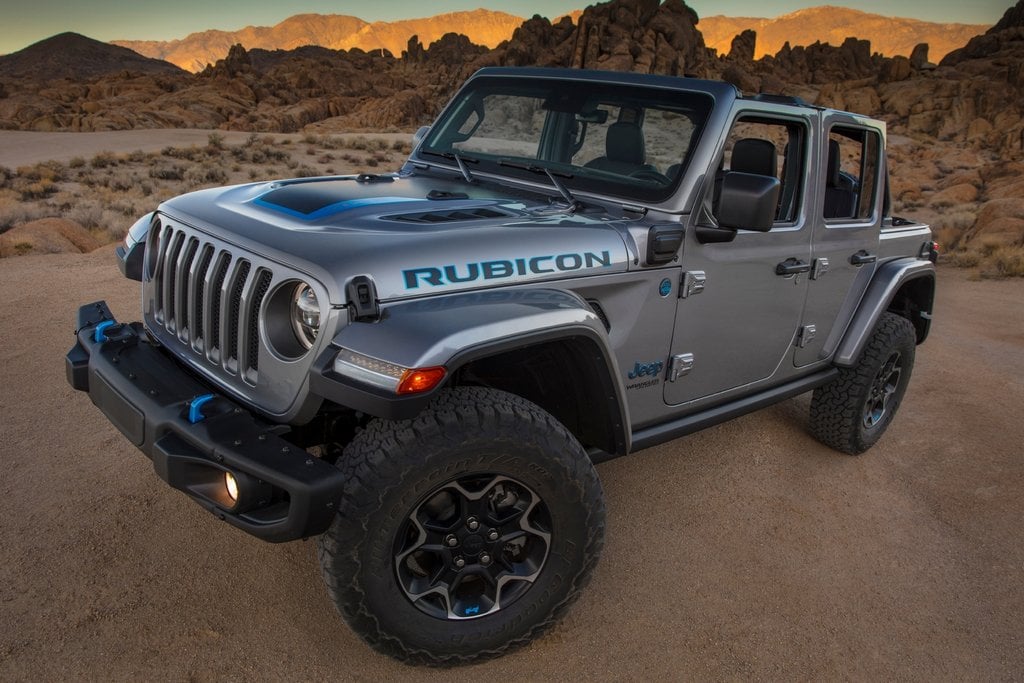
If you’re in the market for a fully-electric Wrangler, you’ll have to wait a bit longer. But if you’re willing to consider a plug-in hybrid (PHEV), the Jeep Wrangler 4xe is available now. In fact, the Wrangler 4xe PHEV is one of the top-selling electrified vehicles in America. Jeep has recently said that the massive popularity of the Wrangler 4xe inspired their plans to accelerate bringing By the end of 2025, Jeep says they will have four all-electric Jeep models, and plug-in hybrid options across their lineup.
The 2023 Wrangler 4xe starts at $55,590 for the Willys 4xe. No matter the trim option, the 2023 Wrangler 4xe is good for 375 horsepower and 470 lb-ft of torque, along with 21 miles of all-electric range. That comes out to a combined 49 MPGe. That’s double what you get with the gas-powered Wrangler. If you drive a lot, the savings will add up quickly.
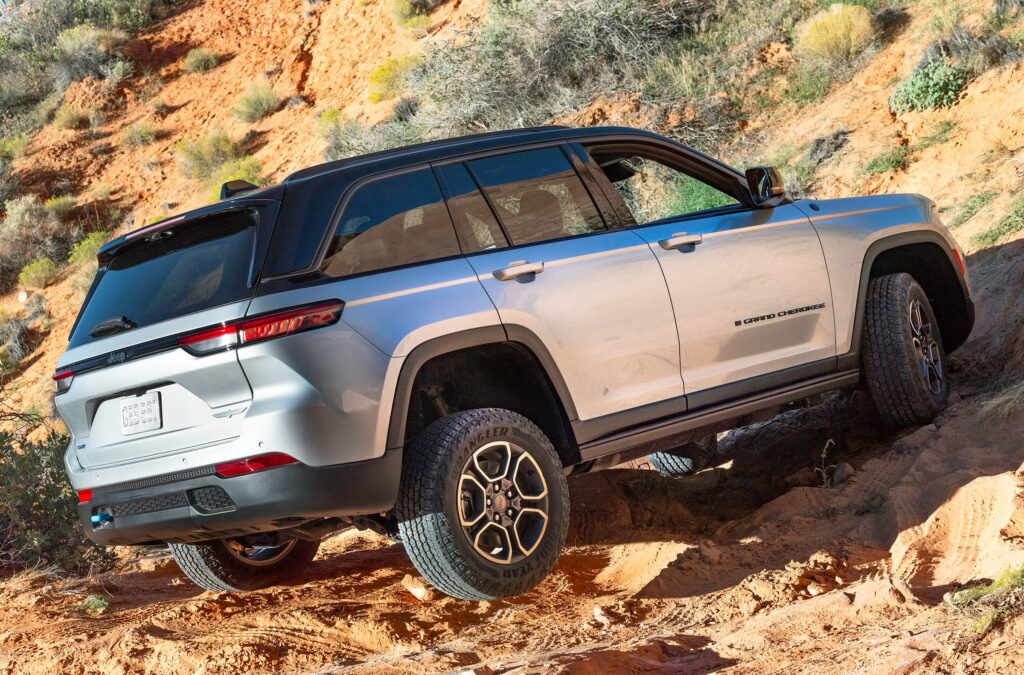
Starting just shy of $60,000, the Grand Cherokee 4xe plug-in hybrid is the definition of value in today’s selection of PHEVs. A Trailhawk 4xe can be had for $62,880. Jeep says that this is where capability meets sustainability.
The Grand Cherokee 4xe is properly powered by a hybrid powertrain that puts out 375 horsepower, 470 lb-ft of torque, 6,000 pounds of towing capacity and a VERY impressive 56 MPGe. All-electric range is 25 miles, with 470 miles of total driving range with one tank of gas and a full charge. We haven’t heard word of an all-electric Grand Cherokee just yet, but Jeep just made major announcements regarding what’s next in their 4xe product lineup.
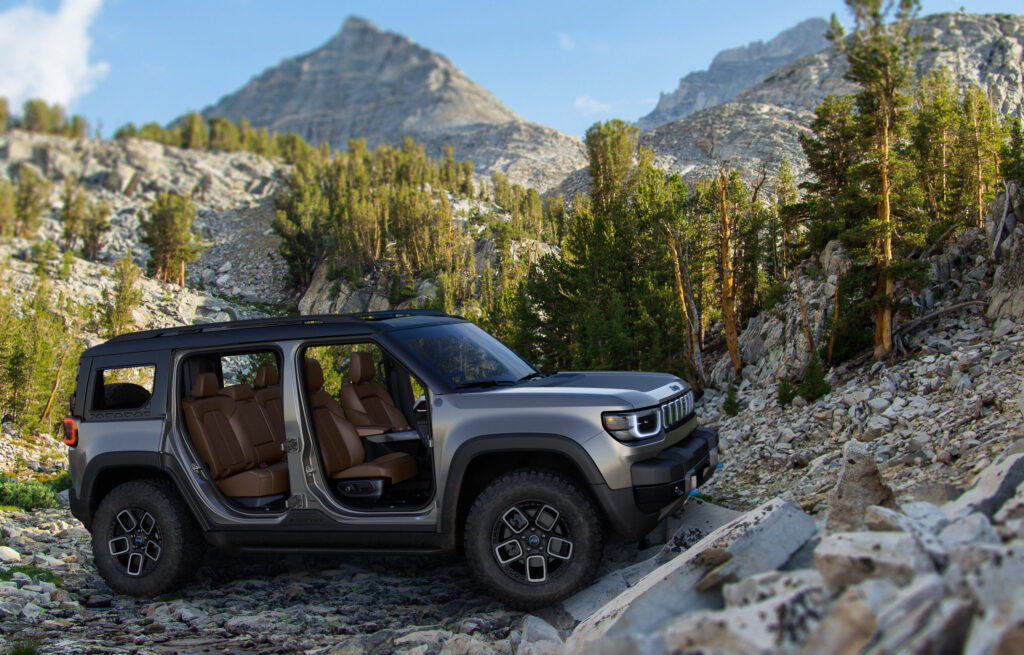
A convertible, open-top, off-road electric Jeep is finally on the way. If the electric Wrangler’s plug-in hybrid powertrain just doesn’t cut it, the fully-electric Recon should suit your needs. This is targeted towards those yearning for an electric Rubicon.
The Recon’s design is inspired by the Wrangler, according to Stellantis’ Chief Design Officer Ralph Giles. The Recon is an all-new model separate from some of the Recon packages that the Wrangler has featured from time to time. Take one look at it, and it’s clearly something different altogether. It’s kind of boxy, kind of rounded, but unabashedly off-road capable.
Jeep says it will have “true trail-rated capability”. The Recon will have tow hooks, off-road tires, and underbody protection to ensure that the battery is always protected. Remember, EVs are built on skateboard-like platforms with batteries beneath the cabin and motors between the wheels.
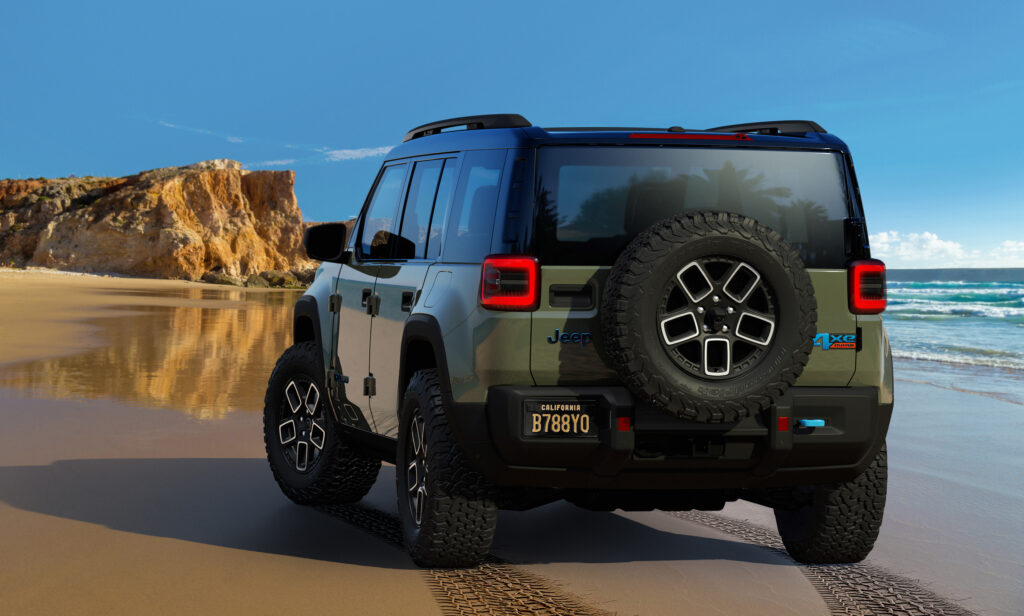
Jeep wants you to know that it is. ““The all-new, all-electric Jeep Recon has the capability to cross the mighty Rubicon Trail, one of the most challenging off-road trails in the U.S. and reach the end of the trail with enough range to drive back to town and recharge,” said Jeep CEO Christian Meunier.
These are the additional details released by Jeep and parent company Stellantis:

Stellantis didn’t announce exact pricing, and considering the volatility in lithium-battery supply chains right now, that was probably wise of them. We can infer from the Recon press release that they are positioning the Recon to basically be an electric Wrangler Rubicon. EVs are always more expensive, so I expect Recon pricing to be roughly $5,000 – $8,000 more than Wrangler Rubicon prices like-for-like. With that said, I estimate the Recon’s starting price to be in the ballpark of $46,000, with fully-optioned trims going for closer to $60,000.
If that’s out of your price range, here’s our list of the BEST electric cars for under $50,000.
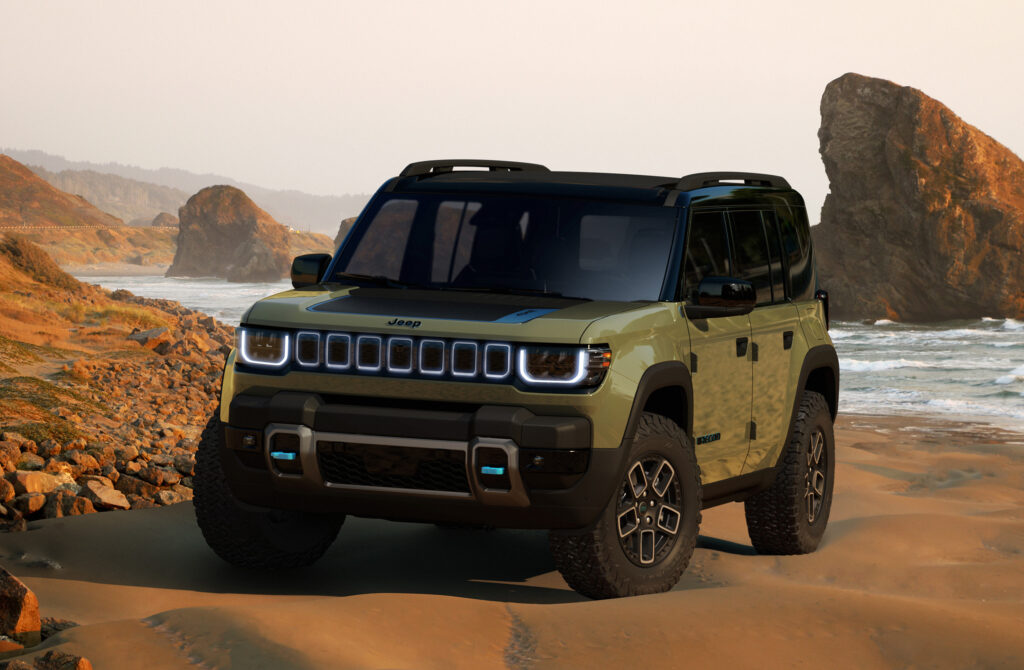
Good news for EV tax credit hopefuls! The electric Recon will be built in America. It’s not confirmed where batteries will be sourced from, but it’s highly likely that they will be supplied by the new Stellantis-Samsung SDI battery plant to be built in Indiana.
Will the Jeep Recon qualify for tax credits? With made-in-America batteries AND final assembly, it’s highly likely that it will. Remember, you’ll have to keep the price under $80,000 for an SUV, and fall under the income limits.
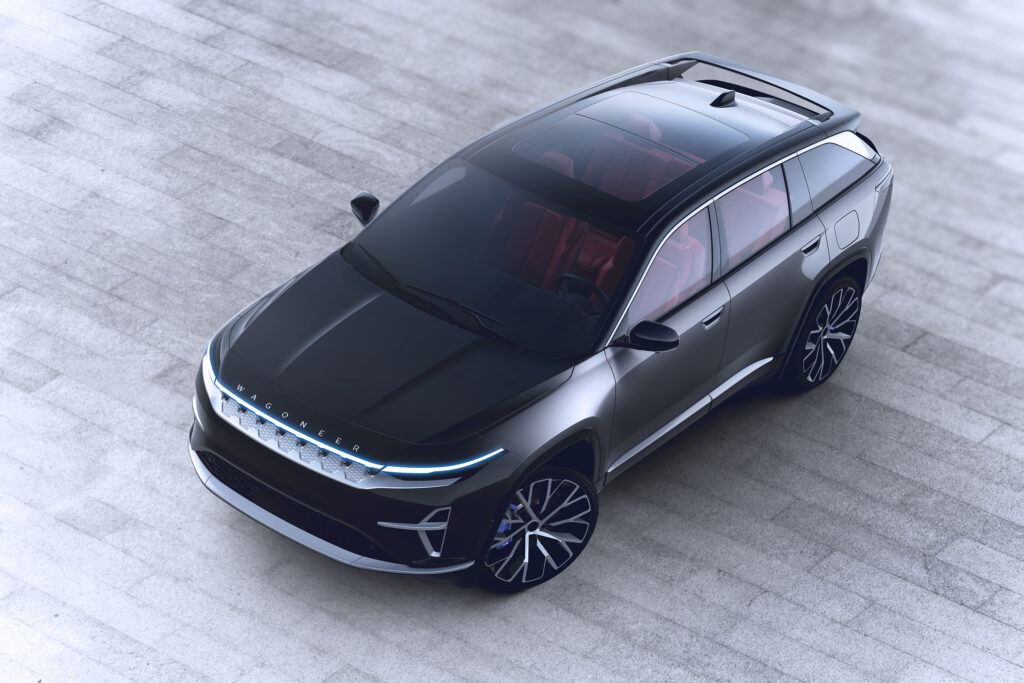
By now, I think we’re all getting used to the Jeep Grand Wagoneer’s foothold in luxury status. The ‘regular’ Wagoneer is much more approachable, but it’s still near-premium priced at $60,000. If you haven’t noticed, luxury automakers are going electric, and Jeep is giving the Wagoneer the EV treatment too.
Jeep calls the electric Wagoneer the ‘Wagoneer S’, but indicated in their own unveiling that it may be a placeholder name. We know little about the Wagoneer S right now, but here’s what Jeep has shared:
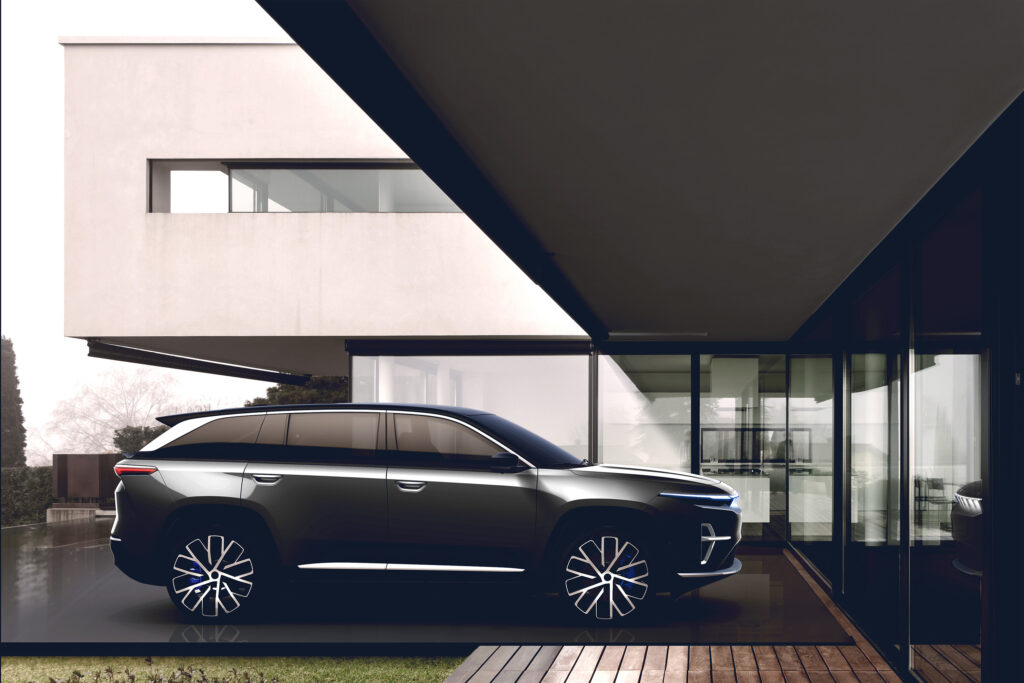
Stellantis isn’t hiding their plans to price the Wagoneer EV in the premium class. They call the Wagoneer S ‘The Art of American Premium’, so expect a premium price.
Need evidence for convincing? Jeep just announced these performance specs for the Wagoneer S: 3.5 second 0-60 time, over 600 horsepower and range of 400 miles on a charge. Every EV available today with performance and range costs at least $80,000. We’re talking about the Lucid Air, Tesla Model S, and a few others. Factor in that this is a mid-sized SUV, and it becomes crystal clear that this won’t be cheap. This one is tougher to estimate than the Recon EV, but considering the pricing for the combustion-powered 2023 Jeep Wagoneer, I think the Wagoneer S electric vehicle will have a starting price between $65,000 and $75,000.
EVs require more costly raw materials, and that drives prices higher. Don’t forget that the more miles you drive in an EV, the sooner the payback period will arrive to break even versus more affordable gas-powered models. And you’re driving thousands of miles with zero tailpipe emissions along the way.
The good news is that the all-electric Jeep Wagoneer S is likely to qualify for up to $7,500 in federal incentives, plus whatever your state has to offer.
We’ll update this page when we know more.
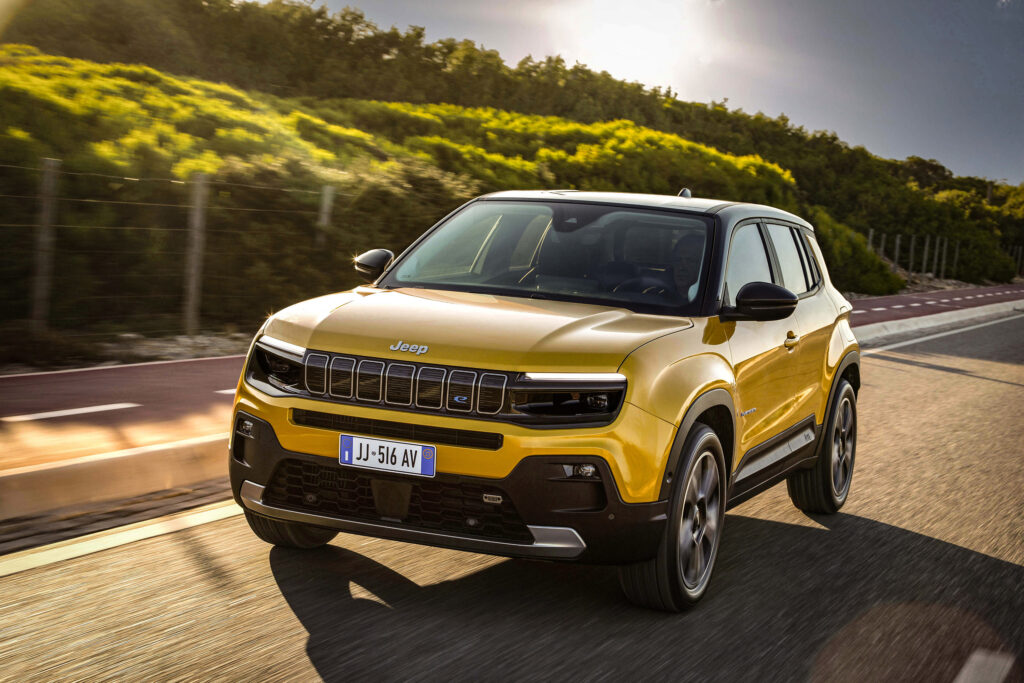
Sadly, Stellantis doesn’t think that the more compact Avenger electric Jeep is suitable for the American market. They have said that the Avenger will be built in Poland for European markets, with no plans to bring it stateside. Americans live compact SUVs, so I suspect this is more of a supply constraint issue.
We’ll be sure to update this page with more information on electric Jeeps as Stellantis releases more details. 2023 and especially 2024 look to be big years for Jeep’s 4xe ambitions.
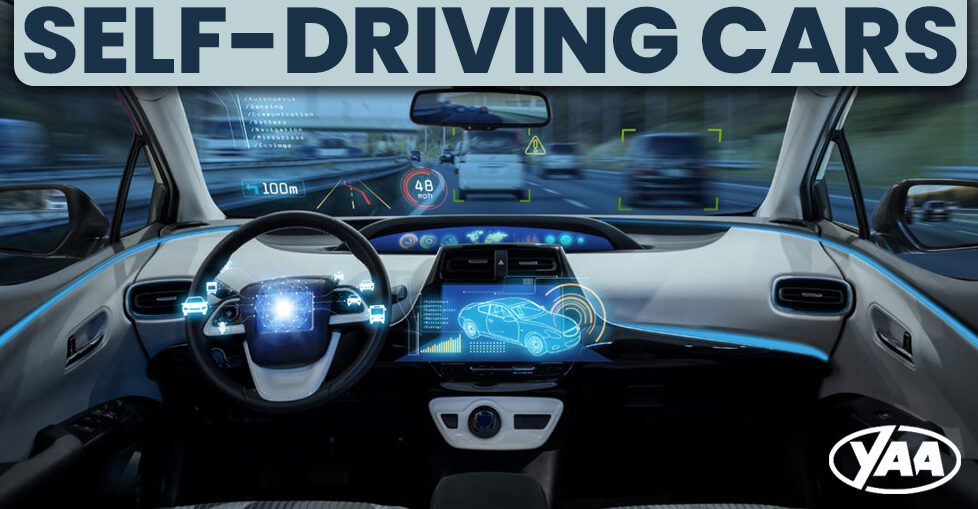
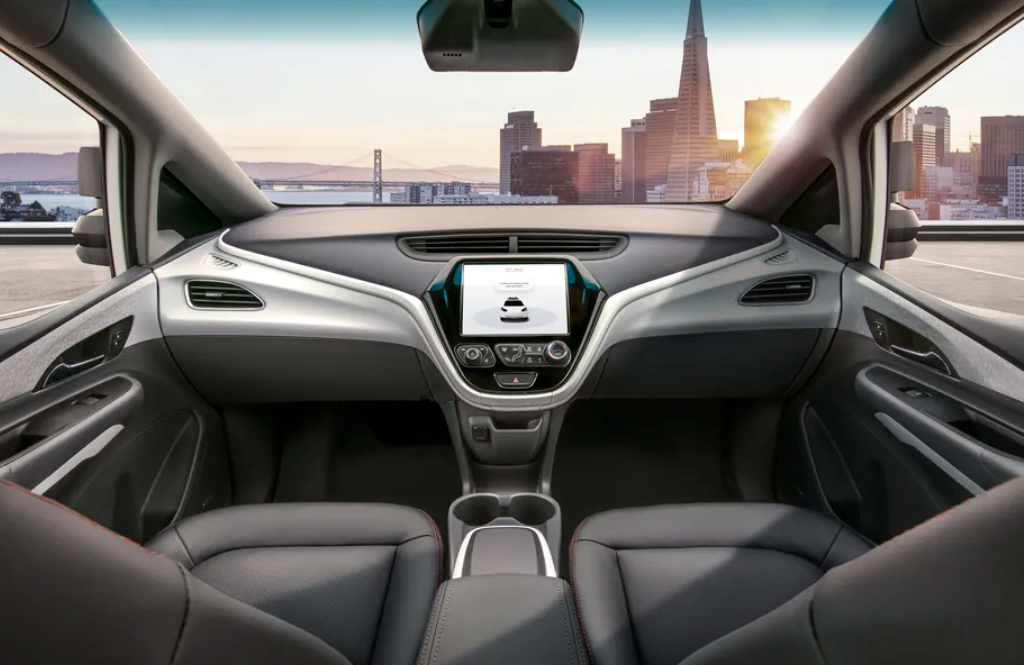
Have you ever seen a driverless vehicle? Not a Tesla, but a moving car, truck or SUV without anyone in the driver’s seat? True self-driving cars are less than a decade away, and key players have established a new industry that’s on the verge of spilling out into the mainstream. Legacy automakers are investing billions of dollars into emerging AI startups focused on driverless tech. These are the big names in autonomous driving, and the automakers they’re teaming up with.
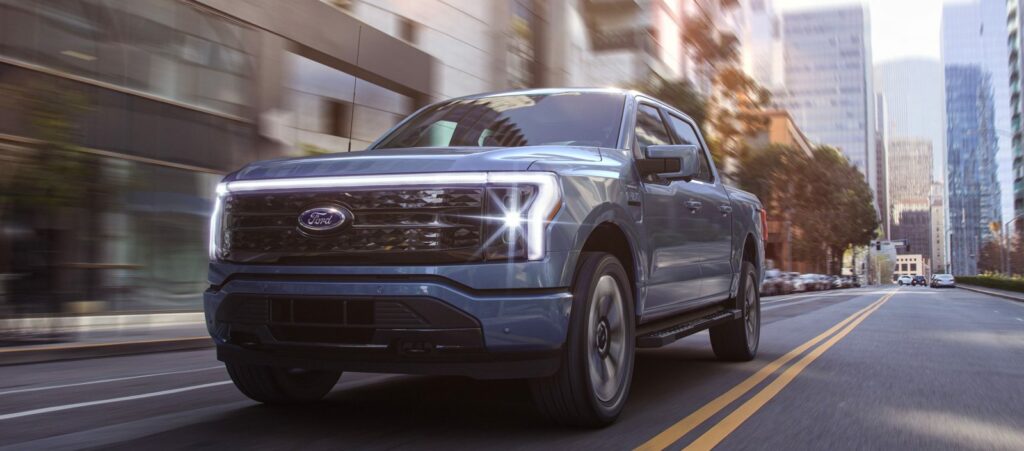
Argo is a Pittsburgh based tech company that is making a name for itself as a leader of autonomous driving technology that is relatively close to mass adoption. Argo has partnerships with Ford, Volkswagen, Walmart and Lyft. The Argo Self-Driving System is already undergoing testing with Ford and Volkswagen vehicles.
Argo’s weakness is more likely a tradeoff that engineers at Argo were willing to accept in exchange for higher probability of success in the near future. And it seems to be working well for them. Argo Self-Driving works on roadways that are intricately mapped beforehand so that the system knows about street-level conditions and safety precautions.
In conjunction with an all-of-the-above sensor approach (LiDAR, radar and cameras), Argo Self-Driving is designed to drive like an experienced driver, but only in certain areas. The benefit of this approach is that it’s much more realistic in the near-term, despite its limited use case.
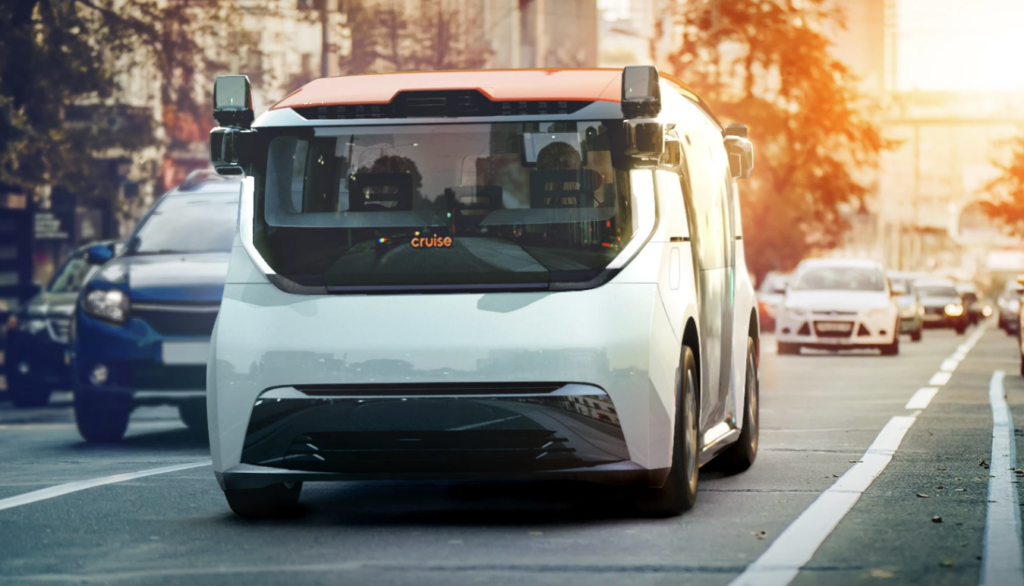
The first generation Cruise Autonomous Vehicle exists on a modified version of the Chevrolet Bolt. That’s because General Motors bought the Cruise startup back in 2016. Rest assured that the next milestone for this promising company is the launch of the Cruise Origin, a driverless pod without a steering wheel. In January of 2021, Honda announced a partnership with Cruise to bring the Origin to Japan. GM announced that the Cruise will begin production in Detroit in 2023. Cruise will certainly be competing head-to-head with Zoox and others with eerily similar product roadmaps.
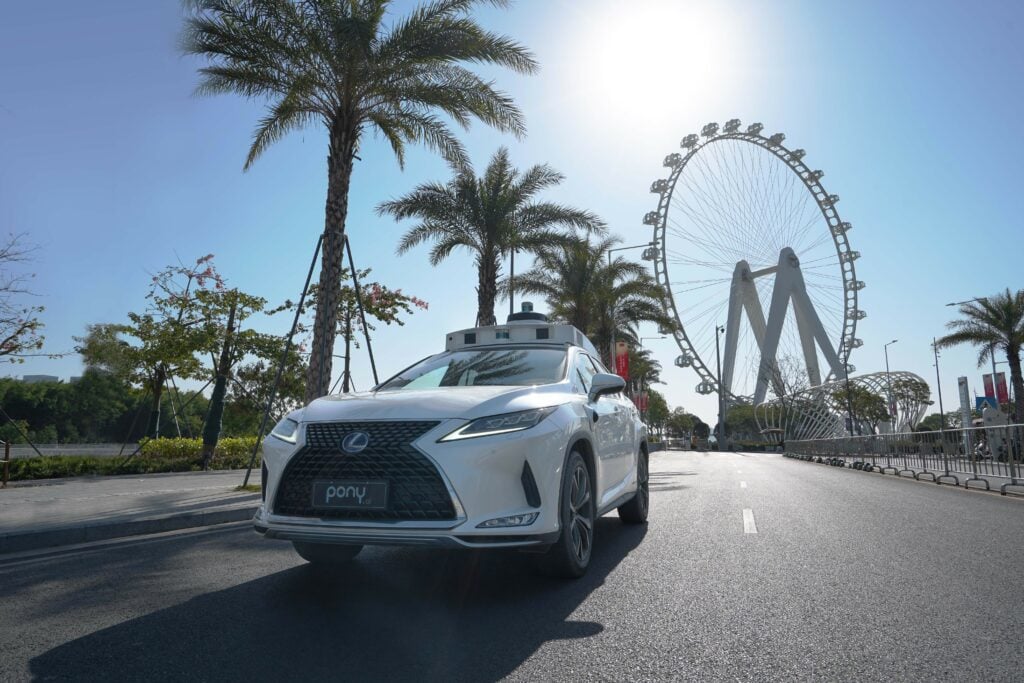
With millions of kilometers of testing completed and a data-driven approach, Pony.AI is playing the long game in autonomous driving. That’s not stopping them from getting off to a strong start. Pony.ai was the first to launch a robo taxi service in 2018, allowing passengers to hail self-driving cars in Guangzhou, Beijing, Irvine, CA, and Fremont, CA. In February 2020, Toyota invested $400 million in the company.

Formerly the Google Self-Driving car project, Waymo is off to a great start with their sensor-loaded approach to autonomous driving. Google started their self-driving research in 2009 back when optimism about near-future autonomy was peaking. Now, Waymo continues as a subsidiary of Alphabet, Google’s parent company.
In 2022, Waymo currently operates ride-hailing driverless vehicles in the Phoenix area, and testing has started in San Francisco and New York. Waymo equips vehicles with a suite of sensors that help the autonomous system paint a picture of the environment around the car at all times. It’s not perfect, but riders say it’s impressive and improving. Interestingly, not all of the vehicles equipped with autonomous driving are fully-electric. Driverless Chrysler vans are a common sight in Phoenix.
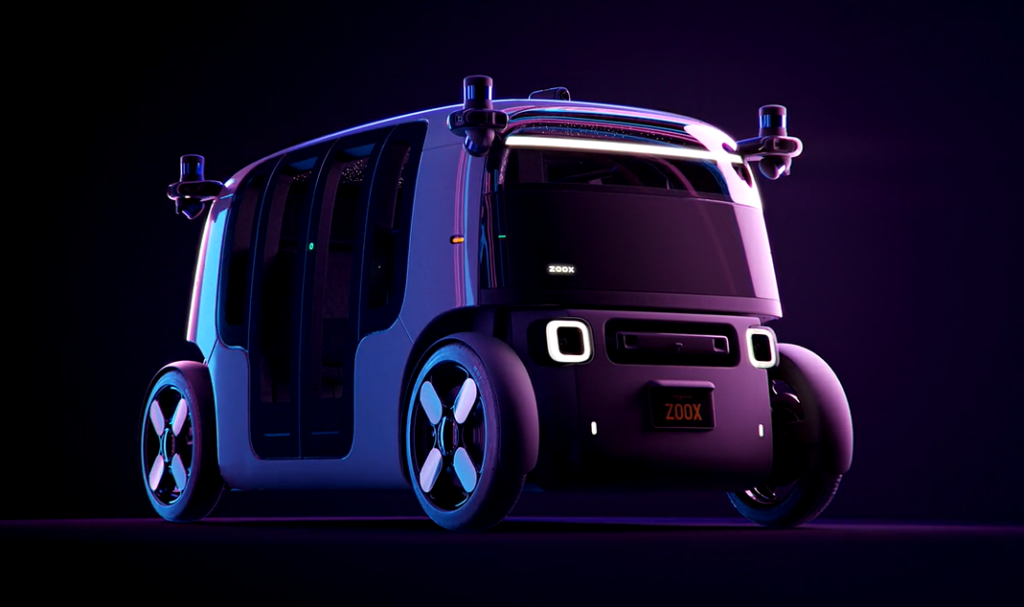
Zoox, a recent subsidiary of Amazon, has the goal of providing enjoyable mobility-as-a-service in dense urban environments. Basically, autonomous ride-hailing. Zoox handles the driving, charging, maintenance, and upgrades for their vehicles. It’s like an autonomous taxi, sort of like Waymo. The rider will simply pay for the service. The Zoox vehicle is a passenger-focused capsule designed in-house. We’ll be hearing more about Zoox autonomous vehicles.
The global autonomous vehicle market was valued at $76.13 billion in 2020, and is projected to reach $2 trillion by 2030. Legacy automakers like GM, Ford, Stellantis and Volkswagen are banking on partnerships with AI startups to leapfrog into a future where driverless vehicles are safe, affordable and accessible. How will the likes of Tesla, Lucid, Rivian, and other newcomers innovate and adapt to the changes to come? Time will tell.
Want to know more? Here’s every automaker’s plan for autonomous driving investments.
Buying a Car? Share Your Experience With Others
Getting ready to buy? See how dealers near you have been treating customers at CarEdge Dealer Reviews. When you make a vehicle purchase, don’t forget to share your experience with the CarEdge family. All submissions are vetted by the CarEdge team. Together, we can transform the car buying experience.
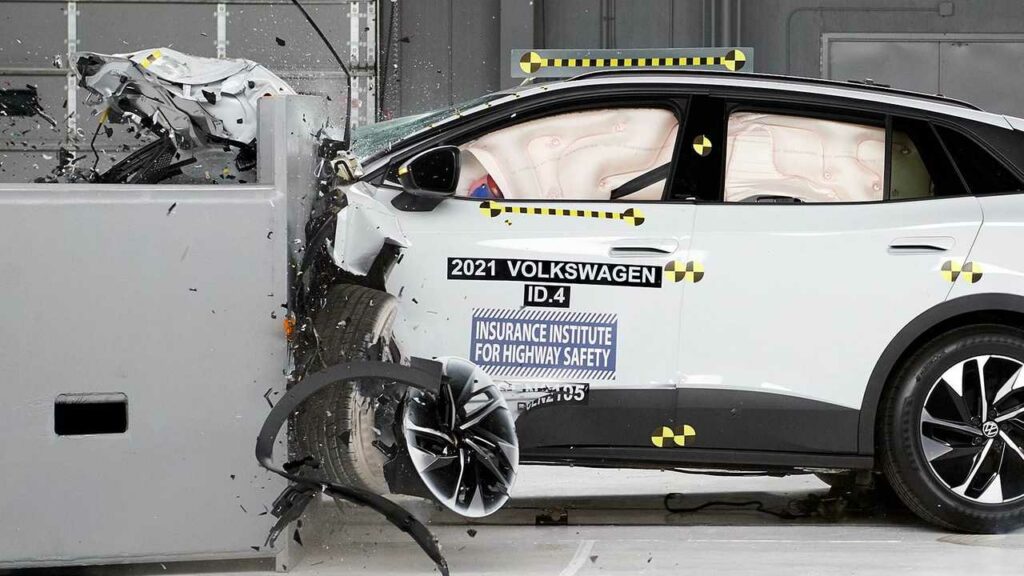
Update 3/8/22: As the Ukraine crisis continues, automakers continue to see impacts. The possibility of a looming raw material shortages is beginning to weigh on semiconductor chip production forecasts, with the real possibility of an even worse chip shortage on the horizon. Metals used in everything from vehicle frames to catalytic converters are soaring to record prices due to the importance of Russia in the global supply. More on the latest developments below.
The ongoing crisis in Eastern Europe is affecting global automakers more than expected. As the conflict drags on into March, automotive suppliers in Russia and Ukraine are experiencing severe disruptions. Logistical nightmares are tumbling out of control as airspace restrictions are enforced. Now, cyberattacks are adding insult to injury. Here’s every automaker impacted by the conflict in Ukraine.
Transport between Europe and countries home to Asian auto manufacturers is facing unprecedented disruption as air space restrictions over Eastern Europe halt 20% of the world’s air cargo. In retaliation to bans imposed on Russia, Russia has reciprocated by banning European carriers from entering Russian airspace, which stretches 5,600 miles from Europe to East Asia. There have also been reports of Russian-based cargo ships being refused refueling at various ports in protest to the invasion of Ukraine.
Furthermore, automotive parts manufacturers located in Ukraine are shuttered, and those in Russia are subject to the effects of sanctions.
Raw materials used in the manufacturing of vehicle frames and electric vehicle batteries are soaring to record highs. Aluminum, palladium, platinum and nickel are most immediately impacted by the Ukraine-Russia conflict. About 40% of the world’s palladium is sourced from Russia. Palladium is used in catalytic converter production. Automotive News reports that auto industry suppliers are well aware of the impending impacts on manufacturing.
“When it comes to metals, Russia companies are major suppliers to Germany. In 2020, they accounted for 44 percent of Germany’s nickel imports, 41 percent of its titanium, a third of its iron, and 18 percent of its palladium.
With production of 108 million tons last year, Russia is the world’s fifth-largest producer of iron ore, according to Credit Suisse, supplying European steelmakers who now face higher prices and possible difficulties procuring the metal.”
Palladium now sits at $3,440 an ounce, 60% above where it was two months ago. Automotive-grade aluminum also hit a record high on March 7. Nickel is at a 15-year high.
Neptune Global chief executive Chris Blasi said that someone will bear the brunt of the record prices and shortage. “There is no other option beyond palladium and platinum for catalytic converters, and you cannot build a car without a catalytic converter,” Blasi said.
Around 70% of the neon used by automotive industry suppliers is sourced from raw materials in Ukraine. Neon is used in the lasers that are critical to the production of semiconductor chips. The ongoing chip shortage may become even worse if the Russia conflict extends beyond a few months. For now, chip makers are relying on existing supplies. Automotive News detailed the neon supply concerns to keep an eye on here.
Although many policy and conflict experts expected worse by now, cyberattacks have disrupted automakers in the past week, causing some plants to briefly close. The automakers themselves are not the only ones at risk. Suppliers critical to the vast automotive supply chain have been hit with cyberattacks, and the result has been felt in recent days.
Volkswagen Group, the parent company of Audi, sources a large portion of its wire harnesses from a Ukrainian supplier. Audi announced production cuts that result from these supply chain difficulties. VW Group brands are among the many who have stopped exports to the Russian market.
The critical wire harnesses that BMW uses for its vehicle production are sourced from suppliers in Western Ukraine. The closure of the suppliers and the associated supply chain bottlenecks have now caused production cuts at BMW’s German plants. BMW also halted production at a factory in Kaliningrad, a Russian exclave situated between Poland and Lithuania. BMW has also suspended vehicle exports to the country.
On March 2, Ford announced a production stop at the Ford Sollers production facility, in which it maintains a 50% stake in partnership with Russian automaker Sollers.
Ford has a 50% stake in three Russian automotive plants. Ford Sollers is the Russian joint venture between Sollers of Russia and Ford. Most of the production at Ford Sollers is for the Ford Transit and similar commercial vehicles. A company spokesperson said that employee safety is their priority, and that effects of sanctions and supply chain disruptions are being assessed.
GM says they are fortunate to have limited supply chain risks as a result of the Ukraine conflict. Still, they are stopping exports to Russia. The move is unlikely to have major impacts for GM, as they sell less than 3,000 vehicles in Russia annually. GM ended production in Russia seven years ago.
On March 2, Honda joined other automakers in pausing sales and exports to Russia. Volvo was the first to make the move.
Interfax News reported that a Russian Hyundai official announced the suspension of output at its plant in St. Petersburg. On March 4, the automaker cited supply issues in its decision to prolong the plant closure. Hyundai is a major force in Russia, selling over 10,000 vehicles per month on average (12% market share).
The UK automaker announced that it is ceasing shipments of vehicles to Russia, effective immediately. Last year, Jaguar Land Rover sold 6,900 vehicles in Russia. A spokesperson said Jaguar Land Rover’s priority was “the wellbeing of our entire workforce and their families, as well as those within our extended network”. The statement went on to cite global supply chains and sanctions. “The current global context also presents us with trading challenges, so we are pausing the delivery of vehicles into the Russian market and continually monitoring the situation on behalf of our global customer base.”
Global auto manufacturer Magna announced the closure of its six Russian plants on March 7, citing “the unfortunate situation in Ukraine.” Magna Spokeswoman Tracy Fuerst shared the company’s support for the Ukrainian people. “Although we don’t have facilities in Ukraine, we have the privilege of working with thousands of Ukrainian colleagues in our Magna operations around the world as well as those from Russia who share the same values of human rights, diversity and inclusion,” Fuerst said. The Canada-based automotive supplier builds parts and entire vehicles for brands ranging from Toyota to Mercedes-Benz.
Mercedes-Benz sources multiple components from suppliers in Ukraine. Mercedes-Benz will reduce production at some European plants this week due to supply shortages. Mercedes sources many components from suppliers in Ukraine. Production shifts will see cuts, but the automaker does not expect to fully stop production outside of Russia. Mercedes is halting production at its Russian plant and pausing the export of passenger cars and vans to the country. They cite sanctions as the cause of the move.
Following Volvo’s lead, Mitsubishi announced that it will halt production and sales of their vehicles in Russia, effective March 1st. Mitsubishi has 2.2% market share in Russia.
Stellantis established a task force to identify disruptions from the ongoing conflict. Stellantis CEO Carlos Tavares said that the automaker has 71 employees in Ukraine. They are ensuring compliance with the rapidly-evolving sanctions in place.
Stellantis, the result of a merger between Fiat Chrysler and Peugeot, produces and sells the Peugeot, Citroёn, Opel, Jeep, Fiat brands in Russia. In January, Stellantis announced that they will begin exporting Russian-made commercial vehicles to Western Europe. The latest developments will likely put a hold on their plans. In 2021, Stellantis brands had just 1% market share in Russia.
On March 2, Toyota announced an indefinite pause in production at its Russian factory. Toyota produces about 80,000 vehicles at its St. Petersburg plant. They are also pausing imports into Russia.
All 14 domestic factories were closed on February 28 after critical supplier Kojima was taken down by a cyberattack that included a threatening message. The supplier was hit with a virus soon after Japan’s government announced support for Ukraine.
Toyota announced that it would resume production at all facilities in Japan the following day. Kojima was unable to operate, and Toyota said they do not stockpile the parts made by the supplier. Toyota relies on 60,000 suppliers, an immense vulnerability that Toyota is surely rethinking.
Volkswagen Group, which includes Audi, Bentley, Cupra, Porsche, Lamborghini, Skoda, SEAT and Volkswagen, continues to face supply chain constraints. VW branded vehicles are produced using wire harnesses sourced in Ukraine. As reserve supplies run low, more production cuts are possible. Production of Volkswagen’s electric vehicles is halted because of supply chain disruptions. The Volkswagen ID.4, ID.3 and new ID.5 electric vehicles are especially affected.
On Thursday March 3, Volkswagen said it is suspending its Russian business until further notice. No cars from VW Group brands will be exported to Russia. VW delivered 216,000 cars in Russia in 2021, about 2.4% of Volkswagen Group’s global vehicle sales.
As supply chain vulnerabilities surface, VW says it will idle the massive Wolfsburg plant. The VW Zwickau and Dresden plants are also closed for the week. Prior to the Ukraine-Russia disruptions, there was already a 6-12 month wait for buyers ordering a Volkswagen ID.4 in North America.
On February 28, Volvo became the first automaker to cease shipments of new vehicles to Russia. The Swedish automaker (owned by Geeley of China) cited their desire to avoid possible conflicts with the rapidly changing sanctions being imposed on Russia by the European Union, United States, and allies. Volvo sold 9,000 cars in Russia in 2021.
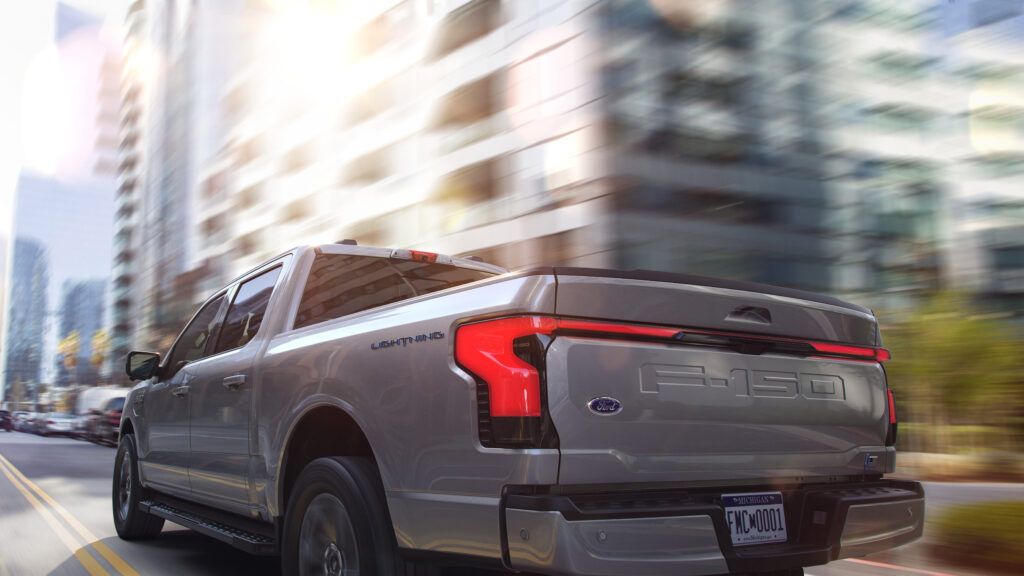
The Russia-Ukraine conflict adds a new dimension to the production delays and supply chain disruptions that have been dragging on for well over a year. The latest chip shortage forecasts show a delayed recovery, despite earlier optimism. So far in 2022, AutoForecast Solutions has increased their projection of vehicles lost in production due to the chip shortage by 63%, from 767,700 to 1,253,100.
Severe sanctions on Russia and instability in Ukraine may persist far longer than originally expected. Now that cyber security vulnerabilities are being targeted, sporadic production halts are becoming the new normal. Automakers impacted by the Ukraine conflict are in for prolonged uncertainty. Automakers may be entering a period of disruption being the new normal, even as the chip shortage will eventually wind down.
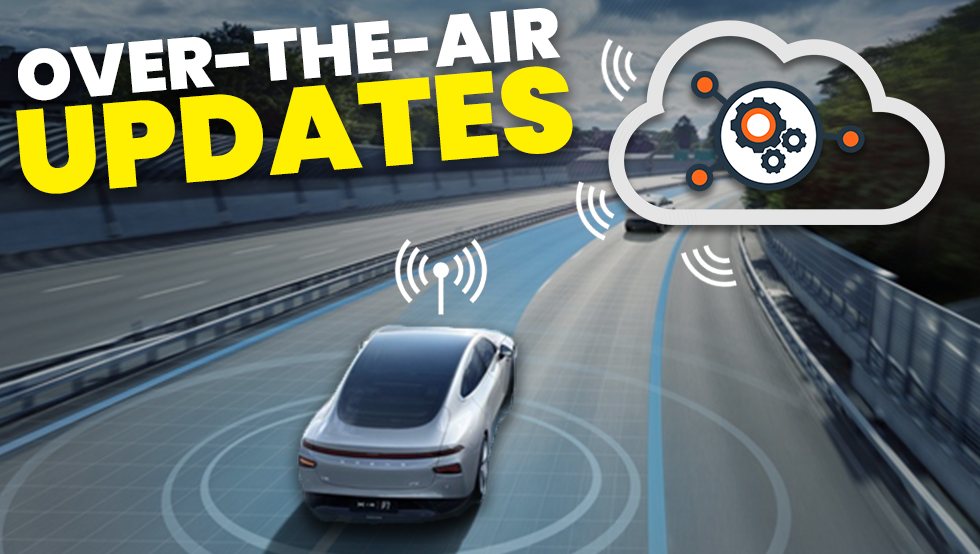
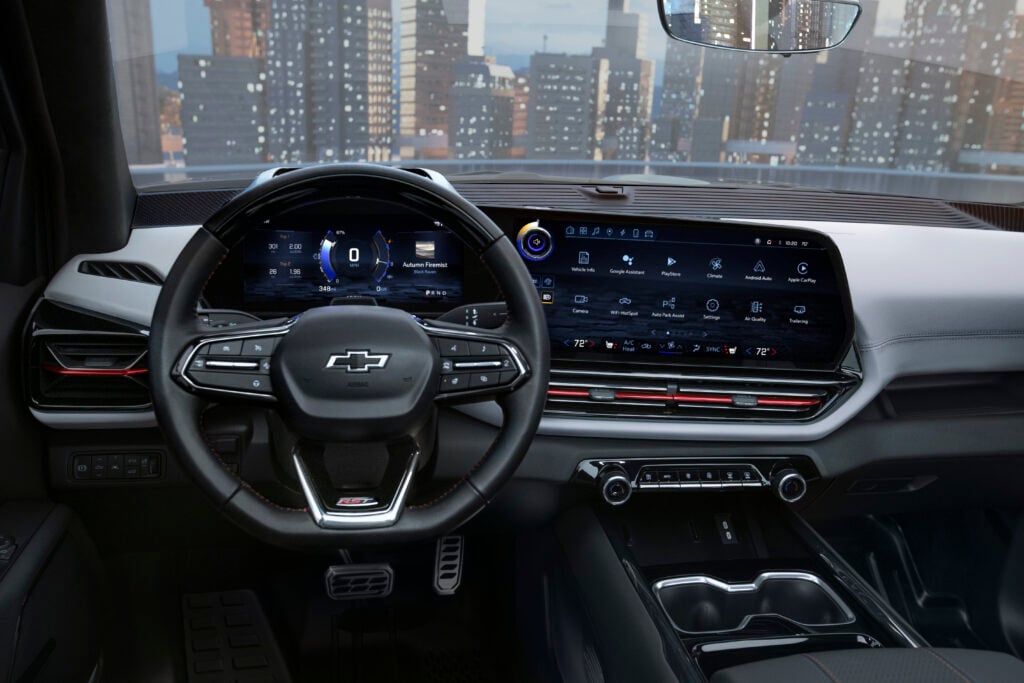
At what point does a car become more of a computer on wheels? Computer integration in the automotive industry is nothing new, however it’s accelerating at breakneck speed. Both software and hardware become outdated in no time at all. Is there a way for car buying habits to steer clear of the two-year replacement cycle that smartphones have fallen into?
As soon as computers grew wheels (in the form of electric vehicles), forward-thinking automakers launched over-the-air (OTA) update capabilities. Tesla was the first to do it, and now the likes of Ford, GM and Volkswagen are among the legacy OEMs marketing their vehicles as OTA-ready. Although, not all who’ve tried it have succeeded without hiccups. Here’s how OTA updates are changing car ownership, and what’s to come in the years ahead.
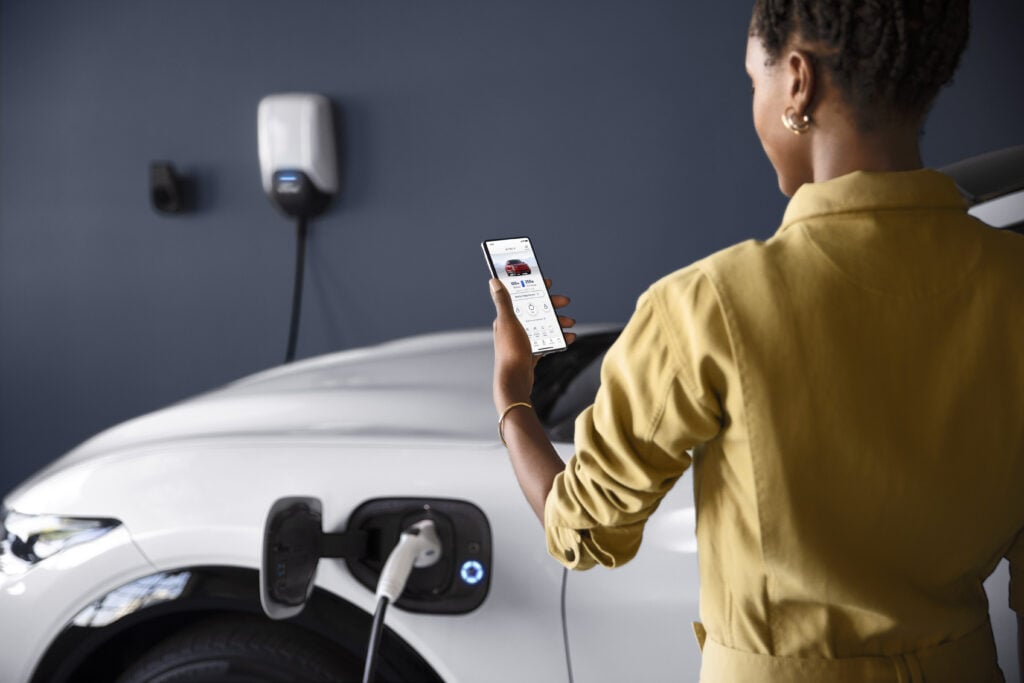
You know when your phone gives you a push notification about scheduling a time to install the latest software updates and bug fixes? Well, cars can do that too now. OTA updates are not just for software fixes. With OTA capability, vehicles can receive enhanced performance and safety improvements via a simple wireless internet connection.
OTA updates eliminate the need for making a service center visit for many simple fixes and updates. The updates are sent and downloaded via access to a cloud-based server with a wireless internet connection. Many updates are free of charge, and all safety enhancements are at no cost. However, we are entering a new era where OTA presents a new revenue stream for car makers.
Everyone’s getting in on the subscription business, and the auto industry is no different. There are two kinds of OTA updates: those for infotainment, and those for vehicle performance and control. They may target either software or firmware, the latter of which required more advanced security protocols to implement.
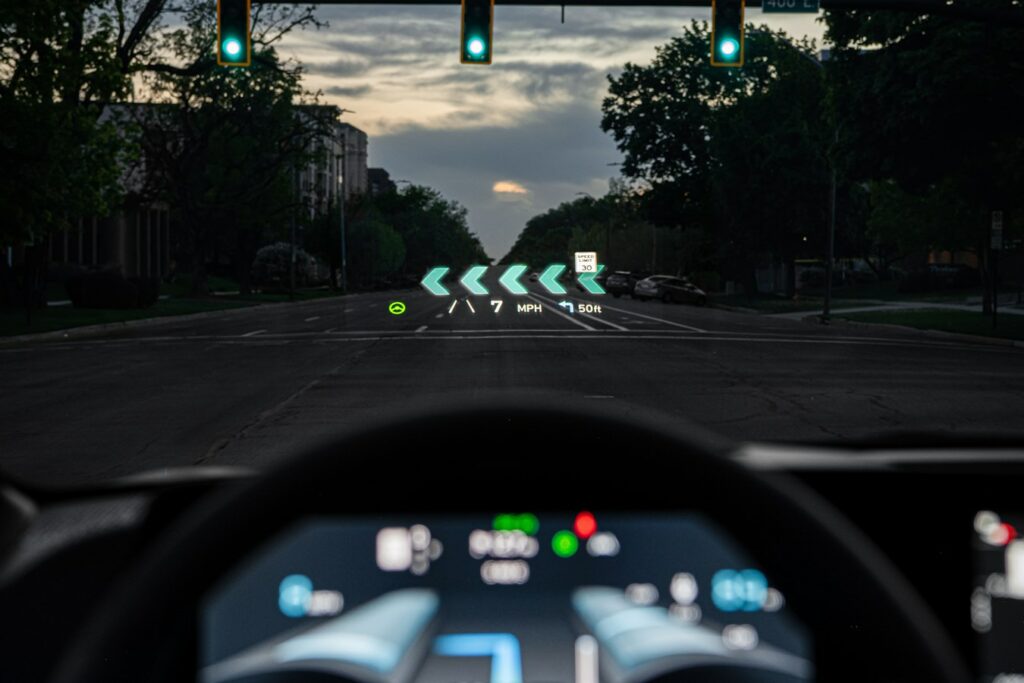
Infotainment updates improve the user experience. A classic example is how Volkswagen ID.4 owners are pleading for an improved infotainment performance after the original equipment was delivered with a laggy touchscreen and haptic buttons. Fortunately for ID.4 owners, the car is among VW’s first generation of OTA-capable models, and a fix is on the way.
Sometimes, OTA revisions cause frustration and even anger from customers. Tesla recently pushed the Version 11 user interface to all of it’s vehicles via over-the-air download. The result was strong critical feedback from customers, most of whom were complaining about the automaker trying to fix something that wasn’t broken.
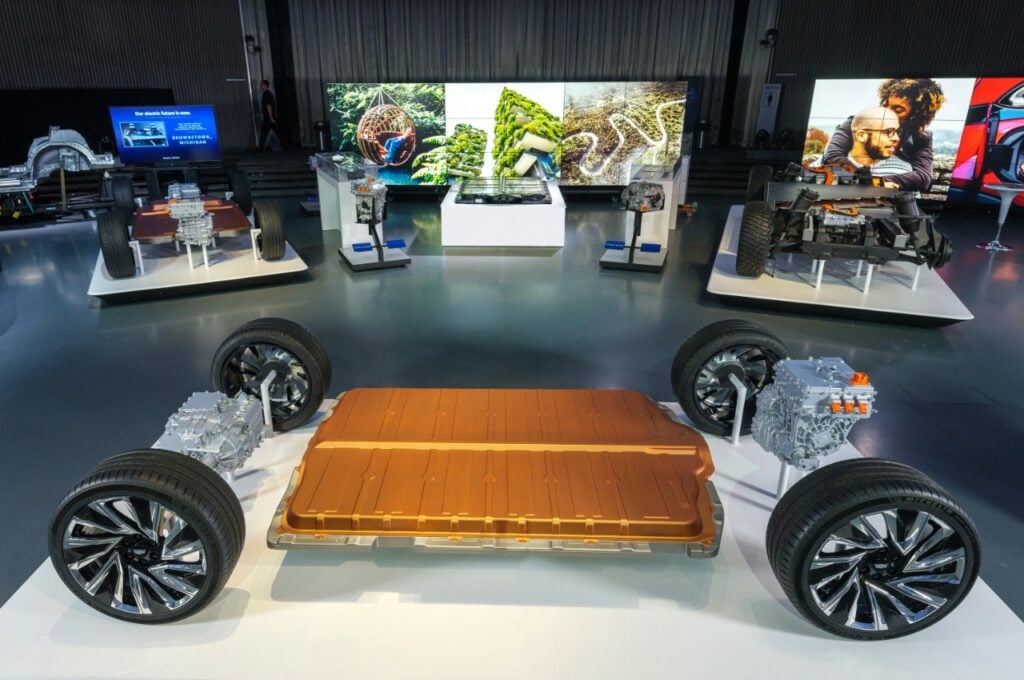
How is it that the 2023 Tesla Model 3 has a quicker 0-60 time now than it had when it was first purchased? Or how Tesla vehicles can gain or lose access to the controversially-named ‘full self-driving’ based on driver safety scores? With OTA capability, automakers can send everything from a power boost to a pedestrian avoidance feature to cars already in driver’s hands.
Vehicle performance and control updates can include updates to the vehicle’s powertrain, chassis systems, and advanced driver assistance systems (ADAS). Of course, updates to these critical components of a vehicle are only possible when the components are electronically controlled and operated. For this reason, an older car model can’t be retrofitted to become OTA capable.
Tesla was the first automaker to roll out over-the-air capabilities with the launch of the Model S in 2012. After years of skepticism from the competition, here are the other OEMs that have announced or commenced OTA updates in their vehicles:
| Automaker | OTA-Upgraded Components |
| Audi | Navigation |
| BMW | Infotainment, optional features |
| Ford | ADAS, several other components |
| General Motors | Nearly every vehicle component on EVs, major components on combustion vehicles |
| Honda | Infotainment |
| Hyundai | Infotainment, voice assistance |
| Jaguar/Land Rover | Infotainment, charging capabilities |
| Lucid | Nearly every vehicle component and system |
| Mercedes-Benz | Infotainment, navigation |
| Nissan | Infotainment |
| Polestar | Nearly every vehicle component and system |
| Porsche | Limited functions |
| Rivian | Nearly every vehicle component and system |
| Stellantis (FCA) | Infotainment |
| Tesla | Nearly every vehicle component and system |
| Toyota | Infotainment |
| Volkswagen | Several vehicle components and systems on EVs |
| Volvo | Nearly every vehicle component and system |
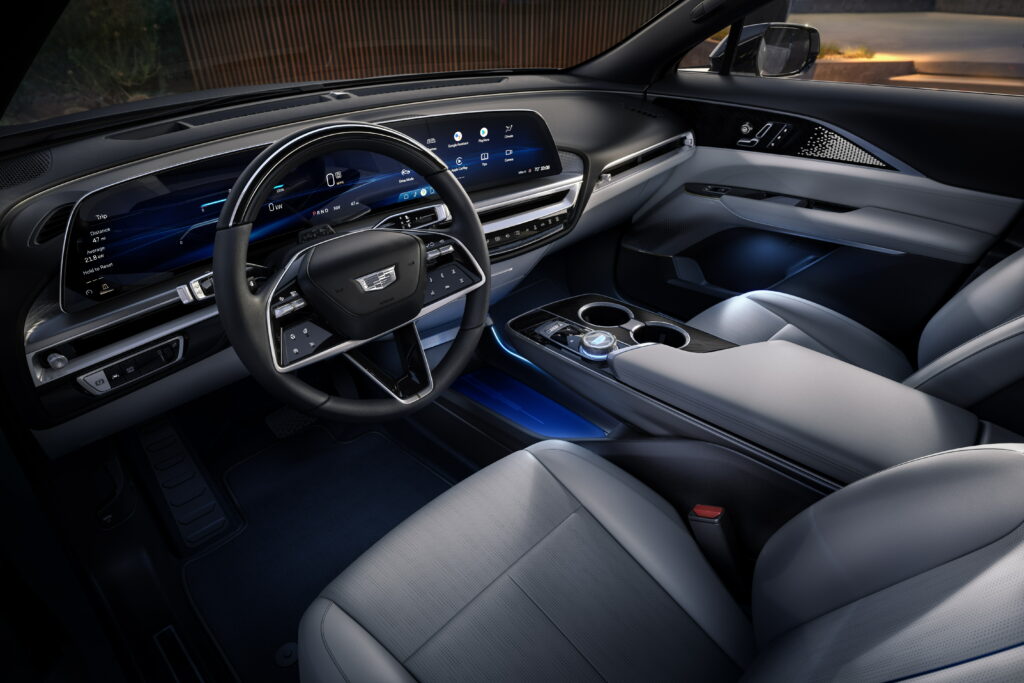
We’re used to having virus protection on our computers. If we don’t, bad guys will find a way to compromise the computer and access personal information. Are the same security and privacy concerns applicable to automotive OTA updates?
Since OTA updates require a wireless internet connection to install, there are risks for malware and the unintended release of personal information. The best way to protect yourself from these risks is to only accept OTA updates while connected to a secure network, such as the wifi network at your home. Don’t try updating your car at the fast food or coffee shop drive thru!
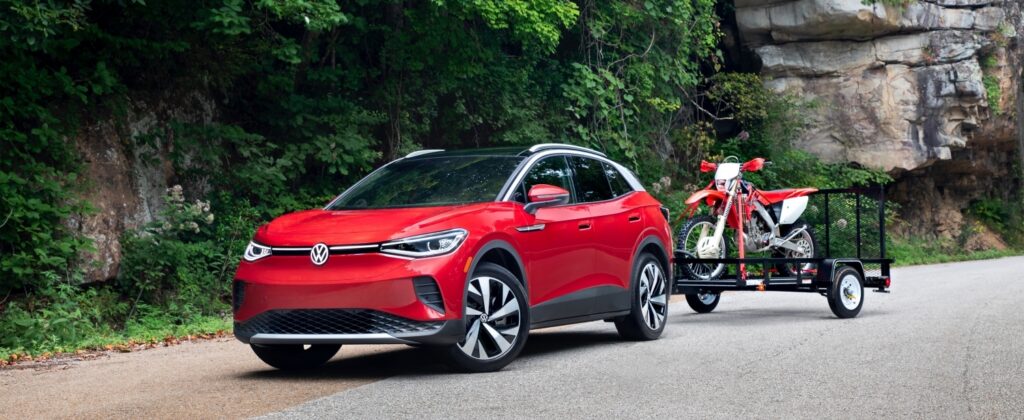
Over-the-air updates are about to take the auto industry by storm. Now that major OEMs are proudly marketing their ability to improve the user experience (which itself sounds like they’re selling more of a tech product than a car), a paradigm shift is at hand. Volkswagen Group CEO Herbert Diess recently told The Verge about VW’s plan for a reimagined future where the relationship between the automaker and customers is more intimate and dynamic with the power of OTA updates and new ways of customizing the ownership experience.
“Imagine: for a long time, we did not have access to a customer as a company. The customer access was exclusively with our retail network. What we experienced over time was that people walk away from our retail outlets and go to third parties to substitute some of the spare parts or buy new tires. Now, we have a new opportunity to be in direct contact with the customer, which is totally new for us.”
Not only is the largest automaker in the world committing to OTA capability, the likes of Ford, GM and even tech-cautious Toyota are joining the bandwagon too. Will OTA updates remain a free upgrade for millions of car owners? Unfortunately, that’s already slipping away. Tesla offers acceleration boost upgrades for its popular Model Y for $2,000, and Toyota recently tried making customers pay for remote start, a feature that is OTA-controlled.
Even the CEO over at Volkswagen Group acknowledges the new money-making avenues made possible by software updates, telling The Verge that eventually, customers will have to pay for what they want.
“We have that revenue in mind for sure as well. Customers will be prepared for some features they didn’t buy at the start, probably after a few years or after a few months — even if they consider taking another option or another software feature, the customers would be prepared to pay a monthly fee or a one-time expenditure.”
There are advantages and disadvantages of OTA update capabilities, but it seems that the advantages far outweigh any negatives that may come with this game-changing technology. As Tesla has shown the industry, there’s a future not too far away when most recalls may be fixed via a quick overnight update, and vehicles get better over time, helping them to retain resale value.
Are you ready to treat your vehicle more like a smartphone than a means of transportation? What do you think the outcome of this major industry shift will be for consumers, dealers and automakers? Will dealerships falter without the steady stream of vehicle service that they’re used to? Only time will tell.
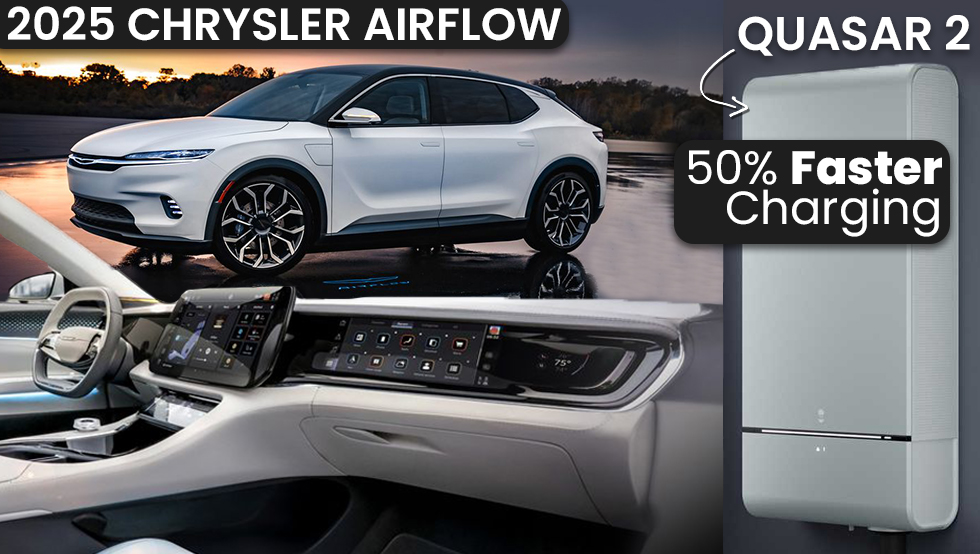
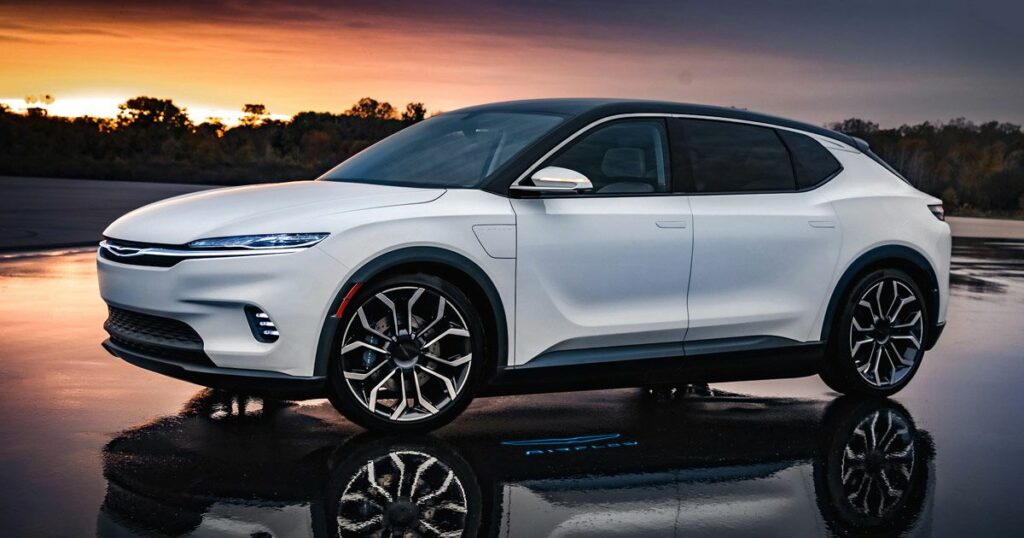
CES 2022 was marked by innovations in the metaverse, NFTs, crypto, and sustainability. But many of the greatest headlines from CES 2022 were in the arena of automotive news. Here are five stories that stood out from automakers that brought their best and brightest.
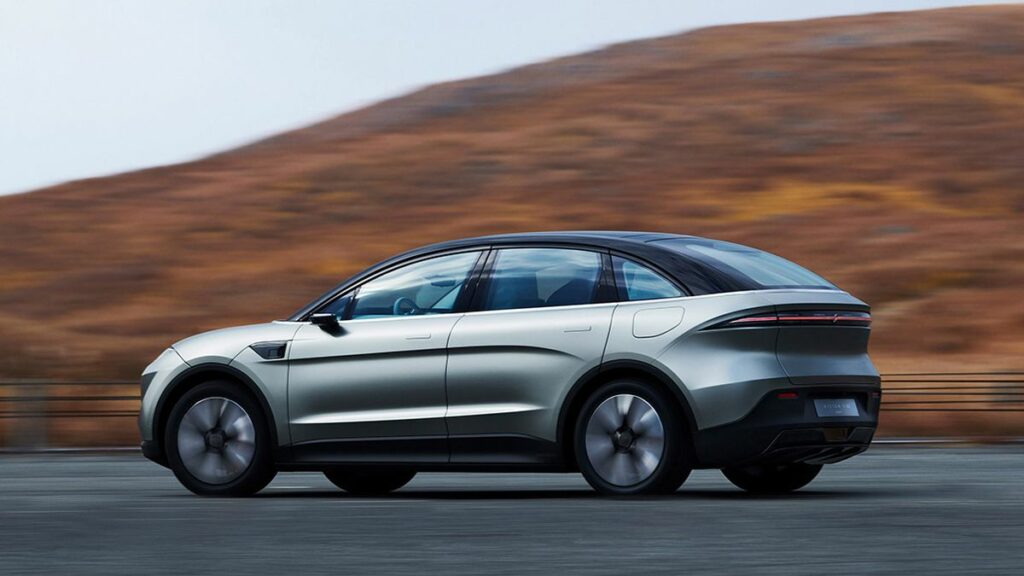
At CES 2020, Sony announced “VISION-S,” an initiative to bring Sony’s tech know-how into the world of mobility. There was a prototype sedan on display, and it was all the rage among automotive and PlayStation enthusiasts. Sony secretly started public road testing in Europe in December of the same year, and has now shared that they were conducting a number of driver experience tests featuring their cutting-edge vehicle technology platform under development.
Two years after kindling their own automotive rumors, Sony CEO Kenichiro Yoshida confirmed the establishment of Sony Mobility at CES 2022. During the announcement, Sony unveiled Vision-S 02, an electric crossover prototype, but offered no specific details about pricing or release dates. With the electric vehicle space getting more and more crowded as legacy OEMs and startups alike unveil their EV plans, Sony must be quite confident that they have something special to bring to the table as they launch Sony Mobility. We’ll be following this one closely.
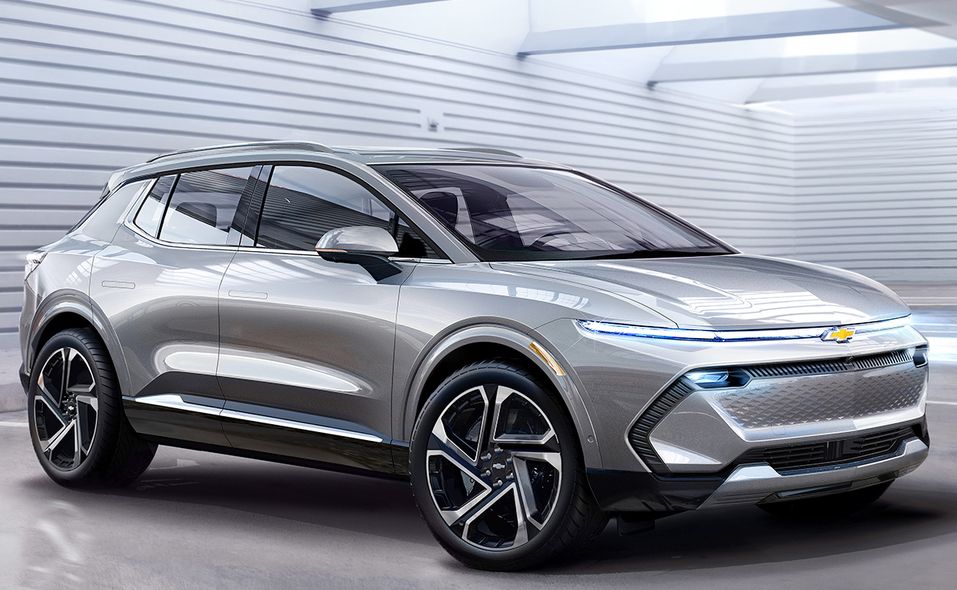
Arguably the biggest headline out of CES 2022 was the full unveiling of the 2024 Chevrolet Silverado EV. With up to 400 miles of range, powerful performance and both luxury and work-oriented trims, the 2024 Silverado EV is positioned to fiercely compete with the F-150 Lightning and Rivian R1T. Who knows, maybe the Tesla CyberTruck will be trickling out of Tesla’s Gigafactory by the time the Silverado EV arrives in customer hands starting in 2023.
Electric vehicles are still expensive. Until prices come down, most consumers won’t be considering going electric for their next purchase. That’s why Chevrolet’s announcement of a $30,000 electric Equinox is a big deal for the whole industry. Coming in 2023, the Equinox EV will be based on GM’s highly-efficient and affordable Ultium platform.
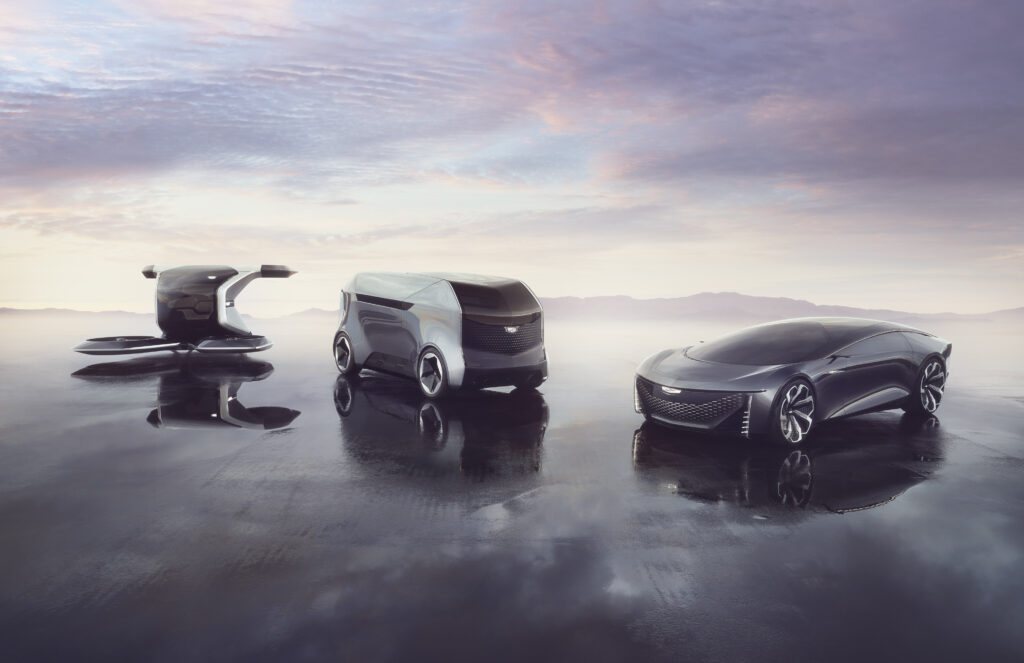
Cadillac is slated to become the first GM brand to go all electric by 2030. The 2023 Cadillac Lyriq will be the first electric Cadillac to arrive at dealerships later this year, and it’s one beautiful luxury crossover. However, it turns out the Cadillac has even more ambitious plans on the table.
At CES, Cadillac introduced the funky and far-out InnerSpace concept. The InnerSpace ‘design experience,’ as Cadillac puts it, is the latest addition to their Halo Concept Portfolio. The InnerSpace is a two-passenger autonomous electric luxury concept vehicle that features nearly 360-degree panoramic views, massive LED displays with integrated augmented reality, and ‘wellness recovery’ features. It sure is something to think about.
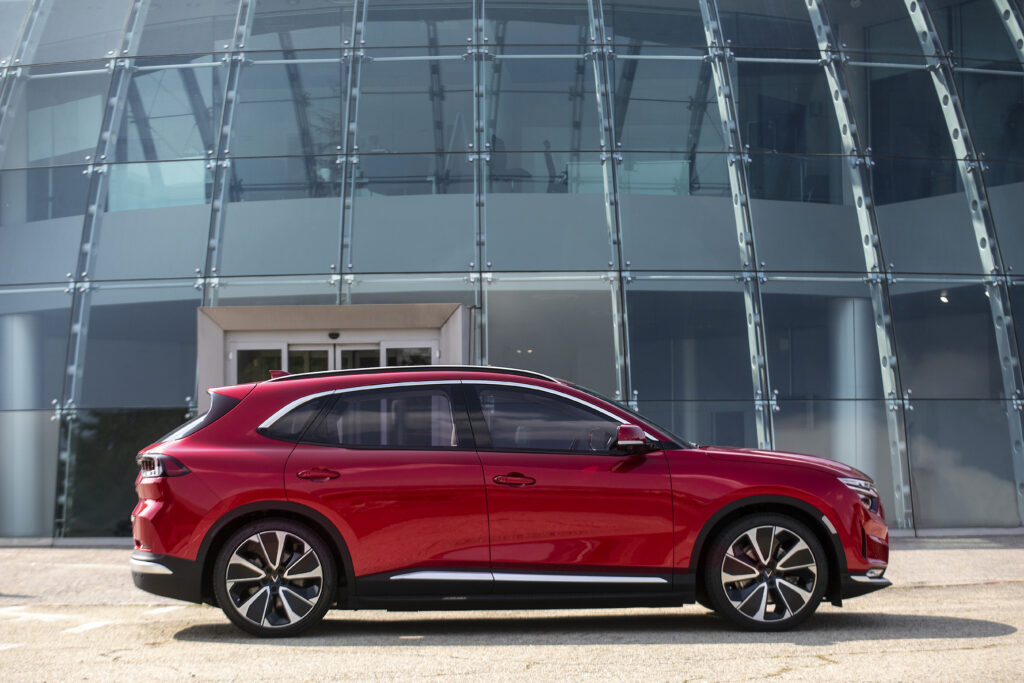
VinFast has been taking the EV scene by storm. Part of their sudden popularity is probably due to the EV stock craze, but some of the attention is because of the different and controversial approach the Vietnamese startup is taking for power supply. VinFast says it will lease batteries to customers rather than including them as standard equipment. They likely took inspiration from Chinese electric automaker Nio’s success with battery swapping, but at least batteries come with their vehicles.
Also at CES 2022, VinFast shared prototypes of their upcoming electric SUVs, the VF-8 and VF-9. VinFast already began deliveries of its first electric SUV in Vietnam last year. It intends to deliver six EVs to international markets by mid-2023.
At CES, the company shared pricing for two models that are nearing production. The midsized VF 8 SUV will start at $41,000. The three-row VF 9 will start at $56,000. However, there’s a big catch. Those prices are without the battery! We’ll see how North American consumers feel about buying an EV without its most essential component.
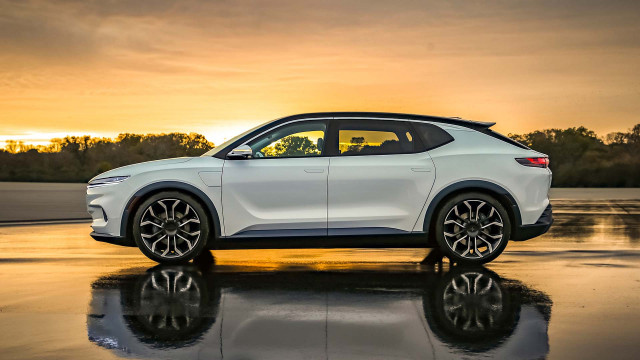
Talk about ambition! In 2022, Chrysler has zero electric vehicles for sale. In fact, it doesn’t intend to sell any EVs until 2025. No big deal, right? What if I told you that by 2028, Chrysler plans to be 100% electric? As crazy as that sounds, that’s exactly the plan that Stellantis shared with us at CES 2022. From the looks of it, they do have a promising EV in the works.
The 2025 Chrysler Airflow is a sleek electric sedan concept that may be closer to production than it seems. The automaker calls it a technology-forward design optimized for efficiency and driver experience. The Airflow integrates leading-edge drive-system technology with intuitive AI and connected vehicle technology that delivers 350- to 400-mile range. They also say it includes the new “STLA SmartCockpit, powered by STLA Brain, that enables an extension of digital, work and home environments, all in sync to create a personalized experience for every passenger.”
Chrysler also says that the Airflow will include STLA AutoDrive, a Level 3 autonomous driving system. That’s a bold claim considering that even the best driver assistance systems today are Level 2, requiring active monitoring at all times. The upcoming Chrysler EVs will also be upgradable via over-the-air (OTA) software updates.
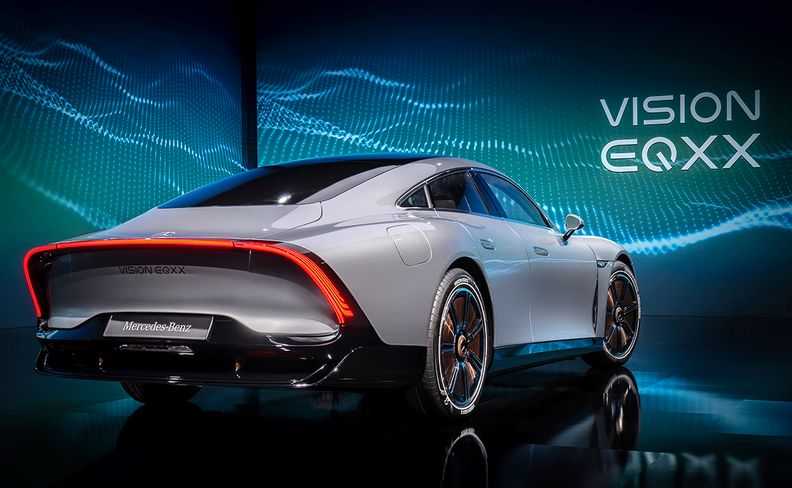
As of 2022, the best long-range EVs on the market offer 400-500 miles of range on a single charge. Notably, the Lucid Air, Tesla Model S and brand-new Mercedes EQS are capable of going the distance. Now, Mercedes-Benz says it is aiming to bring an electric vehicle with more than 620 miles of range to the market by 2024.
The Vision EQXX concept is “more than just a car, it’s a technology program,” according to Mercedes-Benz Chief Technology Officer Markus Schäfer. The next-generation of Mercedes EVs will feature redesigned battery architecture that includes more silicon to increase energy density without making the battery any larger. If you’re in the market for a long-range luxury Mercedes, the German automaker has big plans for taking electric luxury to new heights.
You may have noticed something about the automotive headlines out of CES 2022: the golden era of EVs appears to be upon us. The roaring ‘20s are turning out to be the whirring ‘20s as electric motors make their way into seemingly every new auto. Whether consumers and infrastructure are ready or not, OEM investments in electrification seem unstoppable at this point. What do you think? Are you excited for what’s to come? Or do you see trouble on the horizon? We’ll keep you up to date as the industry transforms like never before.